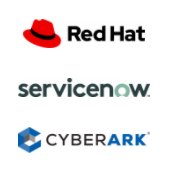Nothing gives you a quick jolt quite like a cyberattack!
However, many people suffer from cybersecurity fatigue these days. They’ve either seen too many headlines about hacking, or they still feel embarrassed about falling for last month’s phishing email.
If the sentence above describes you, snap out of your slumber. Cybersecurity is more important now than ever, as hybrid work is the new norm and perimeters are harder to secure.
During a recent GovLoop training, public- and private-sector cybersecurity experts discussed why and how to defeat cyber fatigue.
Here were their takeaways.
1. Nail the basics
Before one masters the nitty-gritty, they need to understand the basics.
“Focus on those basics first,” said Adam German, the Chief Information Security Officer (CISO) for the California State Controller’s Office (SCO). “Make sure you know where your critical data is located [and] make sure you know what your critical data is.”
Focusing on the basics also includes understanding which cybersecurity phase deserves the most attention.
“It’s the response and recovery phase that needs more attention,” said Timothy Weston, the Director of Strategy and Performance for the Transportation Security Administration (TSA). “The more we integrate our employees into that process, and own that process, it really does improve the security posture.”
Like a fire, you can’t completely prevent a cyberattack, so it’s easier to buy a fire extinguisher and learn how to stop, drop and roll rather than banning all candles and electric blankets from a premise. Understanding how to respond when an attack happens is crucial not just for an agency’s employees, but also for vendors.
“It’s important for vendors to respond when attacks do happen,” said Michael Epley, the Chief Architect and Security Strategist for the Public Sector at Red Hat.
2. Get employees involved
“Getting the security awareness mindset, with the training and education, that’s the first step,” said German.
One of the most important concepts for employees to understand is zero trust security. If you frequent GovLoop often, you know that zero trust means that data is only given to users who can prove their identity, including an agency’s employees. It is important for people to understand the importance of zero trust; it has less to do with not trusting colleagues and more to do with protecting data.
Andy Thompson, a Global Research Evangelist at CyberArk, highlighted that even a tactic as essential as zero trust doesn’t completely stop cyberattacks. Attackers can bypass zero trust, so teams also need quick access.
“For true zero trust security to exist, it is a mixture of zero trust access and just in time provision of that access,” he said.
3. Bad doesn’t equal stupid
Hackers are smart. While you’re still having trouble logging into Zoom after using it for 18 months, they spend their time breaking into highly secure systems. Your job is to be one step ahead of them.
Sometimes it doesn’t even take complicated techniques for them to do their damage.
“Phishing is still a very effective way for a bad guy to get in,” said Jonathan Alboum, the Federal Chief Technology Officer (CTO) and Principal Digital Strategist for the Federal Government at ServiceNow, an IT company that uses cloud computing to help agencies manage workflows.
There’s a reason why certain phrases are overused in cybersecurity conversations.
These are the terms that are most essential to understand.
So, when you keep hearing the word “ransomware,” instead of rolling your eyes, research it to understand how dangerous it is.
“Ransomware is probably one of the main sources of fatigue these days,” said Epley. “[However], ransomware attackers can modify their modes of operation.”
So, the next time you receive an email about a cybersecurity training or hear about another attack, listen up. Even if you and your agency can’t prevent an attack from happening, you can still learn how to recover.
This online training was brought to you by:






Leave a Reply
You must be logged in to post a comment.